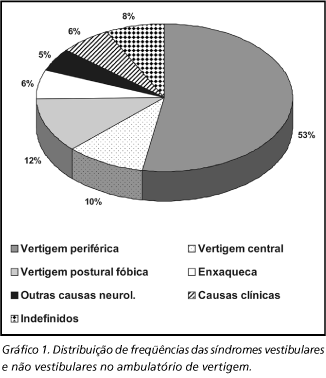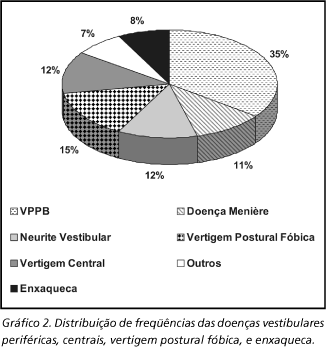The aims of this study were to identify the most common vestibular syndromes in a dizziness unit, and to observe their clinical aspects and response to treatment. Five hundred and fifteen patients were studied retrospectively in two institutions. Aspects of anamnesis, physical examination and the response to treatment were evaluated. The most frequent syndromes were: benign paroxysmal positioning vertigo (VPPB) (28.5%), phobic postural vertigo (11.5%), central vertigo (10.1%), vestibular neuritis (9.7%), Menière disease (8.5%), and migraine (6.4%). A good response to treatment was observed in most patients with migraine (78.8%), VPPB (64%), vestibular neuritis (62%), Menière disease (54.5%) and vestibular paroxismia (54.5%). On the other hand, patients with downbeat nystagmus and bilateral vestibulopathy had poor response (52.6% and 42.8%, respectively). The diagnosis of these most frequent vestibular syndromes were established through anamnesis and physical examination (with specific clinical tests for evaluation of the vestibular function). The correct diagnosis and adequate treatment are important since these syndromes may have a good prognosis.
vertigo; etiology; diagnosis; treatment






